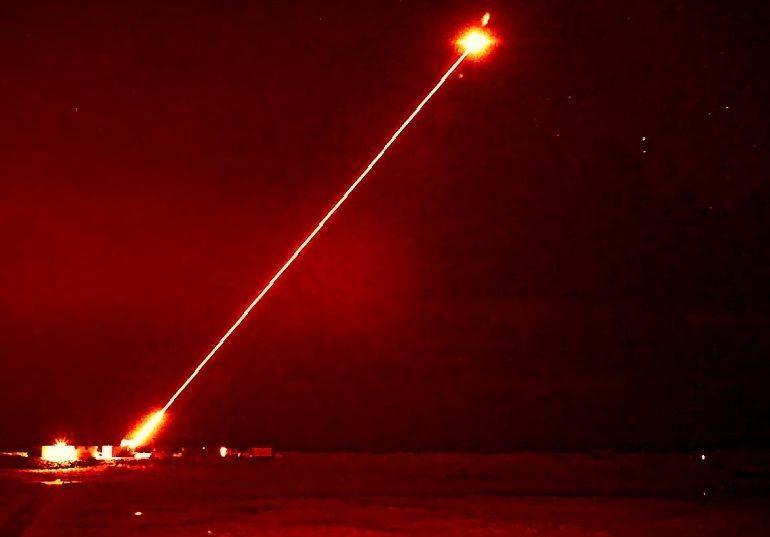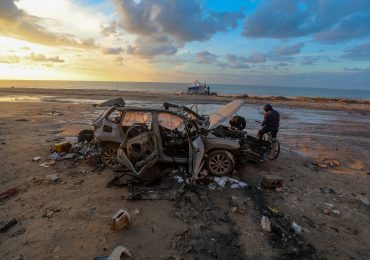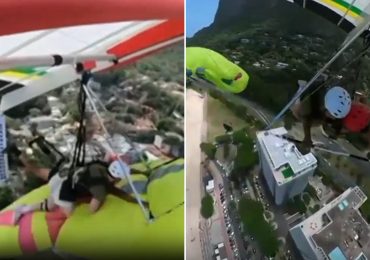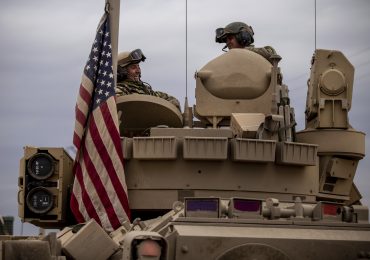A NEW British laser gun dubbed the “DragonFire” could be rushed onto the frontline in Ukraine to give Kyiv an edge in the war of the drones.
Defence Secretary Grant Shapps suggested the Star Wars-style weapon could be used to blast Russian UAVs out the sky at the speed of light far sooner than expected.
The DragonFire laser – which could be deployed sooner than 2027 – was secretly tested in Scotland’s Outer Hebrides in January
PANew images show the fearsome UK-built weapon that can hit targets the size of a £1 coin[/caption]
PAThe MoD released an image of mortar casing showing the pinpoint damage done by DragonFire[/caption]
The DragonFire is expected to be ready for deployment by 2027 at the latest and could have “huge ramifications” for the conflict in Europe, Shapps said.
The Ministry of Defence recently created new reforms to speed up the laser’s procurement by five years – slashing its original operational date of 2032.
However, Shapps hinted on Thursday that they could end up in Ukraine’s hands even sooner – before they are “100 per cent perfect”.
The DragonFire is a cutting-edge laser-directed energy weapon (LDEW), which uses an intense light beam to cut through their target and can strike at the speed of light.
It is designed to shoot down attack drones, missiles, planes and even satellites with its 50kW beam and can hit targets the size of a £1 coin.
The range of DragonFire is classified, but the MoD said it can engage with any visible target.
The laser heats the target to over 3,000 degrees Celsius in an instant.
And as long as the gun has power, it will never run out of ammunition.
DragonFire has cost over £140 million to develop, but the Mod said it cost just a tenner per shot to fire – meaning millions of pounds could be saved in future conflicts.
In January, the formidable prototype was fired at a remote range in Scotland’s outer Hebrides – achieving the UK’s first high-power firing of a laser weapon against aerial targets.
Declassified footage of the secret test showed a lightning-fast burst of red light blasting high into the sky.
As of two years ago, the weapon was said to be able to hit drones from over two miles away.
It has already been fired from a Royal Navy warship and will be tested by the Royal Artillery in the autumn.
Military top brass say it will offer a low-cost alternative to multi-million pound missiles like the Royal Navy’s Sea Viper system used in battle recently to down Houthi rebel drones and rockets over the Red Sea.
PAThe laser weapon has cost over £140million to develop[/caption]
PAThe damage the 50kW light beam did to an attack drone[/caption]
PAThe DragonFire should cut through any target using light energy[/caption]
Speaking on a visit to the MoD’s top secret Porton Down base in Wiltshire on Thursday, Shapps said he is trying to fast-track the weapon so Ukrainians “could perhaps get their hands on it”.
“I’ve come down to speed up the production of the DragonFire laser system because I think given that there’s two big conflicts on – one sea-based, one in Europe – this could have huge ramifications to have a weapon capable particularly of taking down drones.”
He plans to introduce changes to ensure a “much shorter time-frame to get it deployed, potentially on ships, incoming drones, and potentially on land.”
He added: “It doesn’t take that much imagination to see how that could be helpful in Ukraine for example.”
The new procurement model will come into effect this week as the UK attempts to speed up its production of
“It’s designed to not wait until we have this at 99.9% perfection before it goes into the field, but get it to sort of 70% and then get it out there and then… develop it from there,” Mr Shapps said.
Asked whether the system might be ready earlier than 2027, he said: “Let’s say that it didn’t have to be 100% perfect in order for Ukrainians perhaps to to get their hands on it, can we do any better – but 2027 is still the date as of this moment
” But of course I’ll look to see what we can do to speed up.”
Russia’s war recently entered its third year with Kyiv grappling to replenish its depleted ranks and a multibillion-dollar package of US support remains stalled in Washington amid opposition from hardline Republicans.
What the UK has given Ukraine so far
SINCE the start of Russia’s full-scale invasion in February 2022, the UK has pledged almost £12billion in support, including £7.1billion of military aid.
Here is a list of the weapons given:
Tanks & armoured vehicles
The UK led the way by supplying Nato’s main battle tank to Ukraine in 2022.
In January 2023, Ukraine also announced 12 fearsome Challenger 2 tanks would be sent.
Over 120 armoured vehicles have also been supplied.
Long-range precision strike missiles
This includes the bunker-busting £800k Storm Shadow cruise missiles that have been targeted Russian infrastructure deep behind enemy lines and on Russian-occupied Crimea.
Rocket systems, anti-tank weapons & air defence systems
Since 2022, Britain has been donating M270 multiple-launched rocket systems and precision munitions.
It has also sent more than 5,000 anti-tank weapons and over six air defence systems.
Drones
Last summer, the UK said it would supply “hundreds” of attack drones and air defence missiles.
It did not specify what types are being supplied.
Last night, Ukraine’s energy infrastructure was once again targeted in an overnight missile and drone blitz.
More than 200,000 people around Kharkiv left without power, foreign minister Dmytro Kuleba said.
It comes as Russia has resorted to the desperate tactic of using mobile sheds to hide their tanks from Ukraine’s kamikaze drone attacks.
Russian tanks have appeared underneath turtle shell-like cages after it was revealed that a humiliated Putin has lost almost all of the tanks he had when he began his brutal invasion of Ukraine.
This week, Ukraine announced it was building an army of AI-powered super-drones designed to ruthlessly hunt down and strike targets on their own.
The so-called “unstoppable” kamikaze UAVs should be able to avoid Russian interception or jamming and use image recognition to blitz their prey.
In a continuous humiliation for Vladimir Putin, Kyiv has used its comparatively inexpensive homemade drones to destroy his multi-million pound tanks on the battlefield or his warships in the Black Sea – capturing each morale-boosting hit in on camera.
ReutersThe DragonFire is being fast-tracked so that it may be used on Ukraine’s battlefield sooner[/caption]
The remains of Russian tanks after a Ukrainian attack over Easter
Ukraine is developing new AI-guided drones that will use ‘machine vision’ to blast Russian targets
Leave a comment








